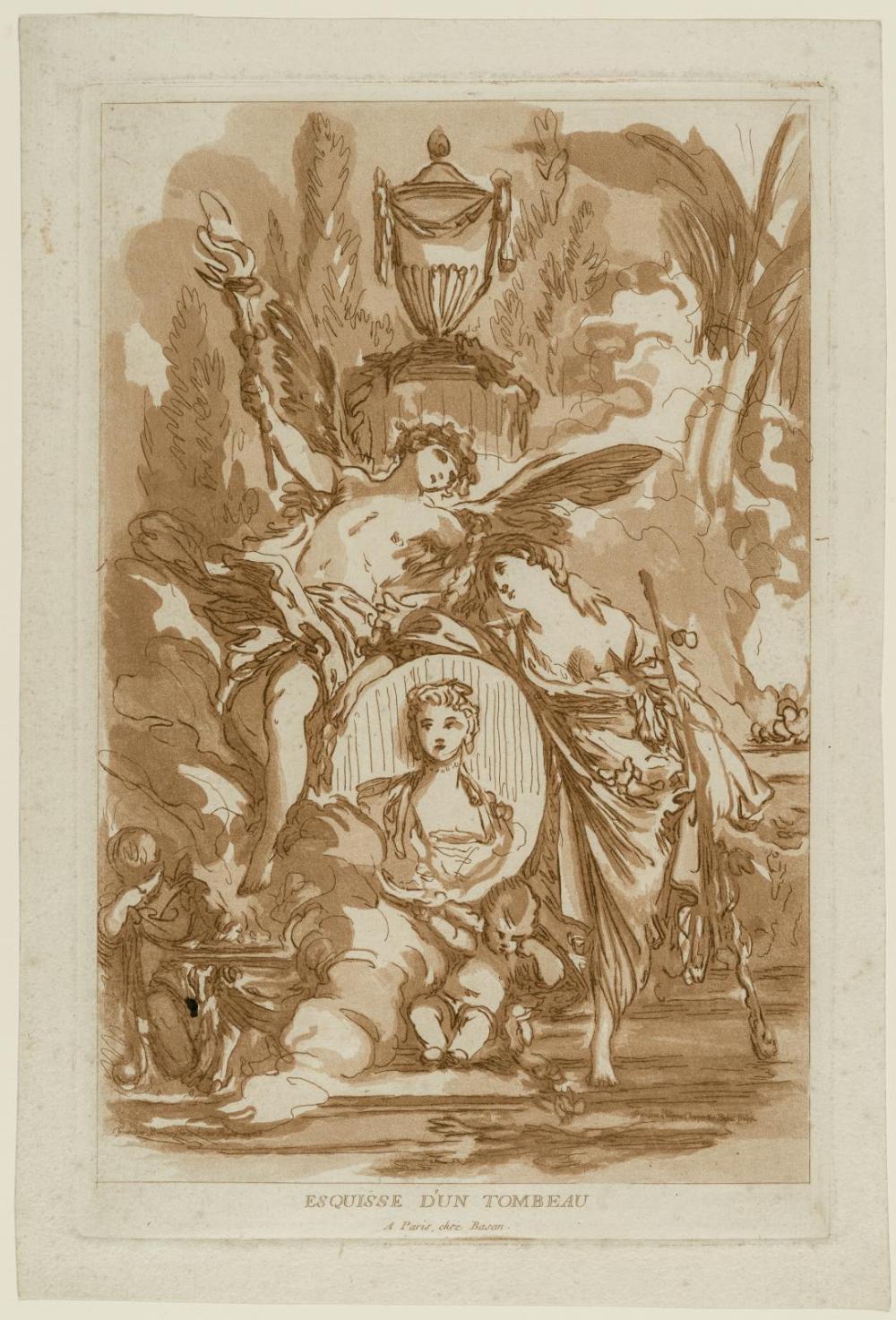Advanced Search 
Esquisses d'un tombeau

Study for a Tomb
Esquisses d'un tombeau
1766
Medium/Technique
Etching and engraving, with aquatint
Dimensions
Sheet: 28.1 × 20.5 cm (11 1/16 × 8 1/16 in.)
Credit Line
Katherine E. Bullard Fund in memory of Francis Bullard
Accession Number2018.109
NOT ON VIEW
CollectionsEurope, Prints and Drawings
ClassificationsPrints
The quest to find a way of making prints that could look like drawings was a recurring obsession in the seventeenth and eighteenth centuries. Most printmaking techniques are built around lines --- lines that are cut, engraved, etched, or scratched into metal or wood. As a result, artists were continually experimenting to find new ways to escape the line and create blocks of "tone" in a print. One of the most successful of all was the etching method called aquatint, in which artists apply a paste to copper that is then eaten away by acid to create blocks of roughened metal that will hold ink. Despite decades of experimentation, it was not until the early 1760s that François-Philippe Charpentier and his student, Per Gustaf Floding, made the first aquatints using the methods that would become standard in years to follow. This reproduction of a drawing by François Boucher is one of the earliest and most ambitious aquatints by Charpentier.
Catalogue Raisonné
LeBlanc 47
ProvenanceJuly 3, 2002, anonymous sale, Christie's, London, (lot 25), to James A. Bergquist, (dealer), Newton, MA; 2017, sold by Bergquist to the MFA. (Accession date: February 21, 2018)
